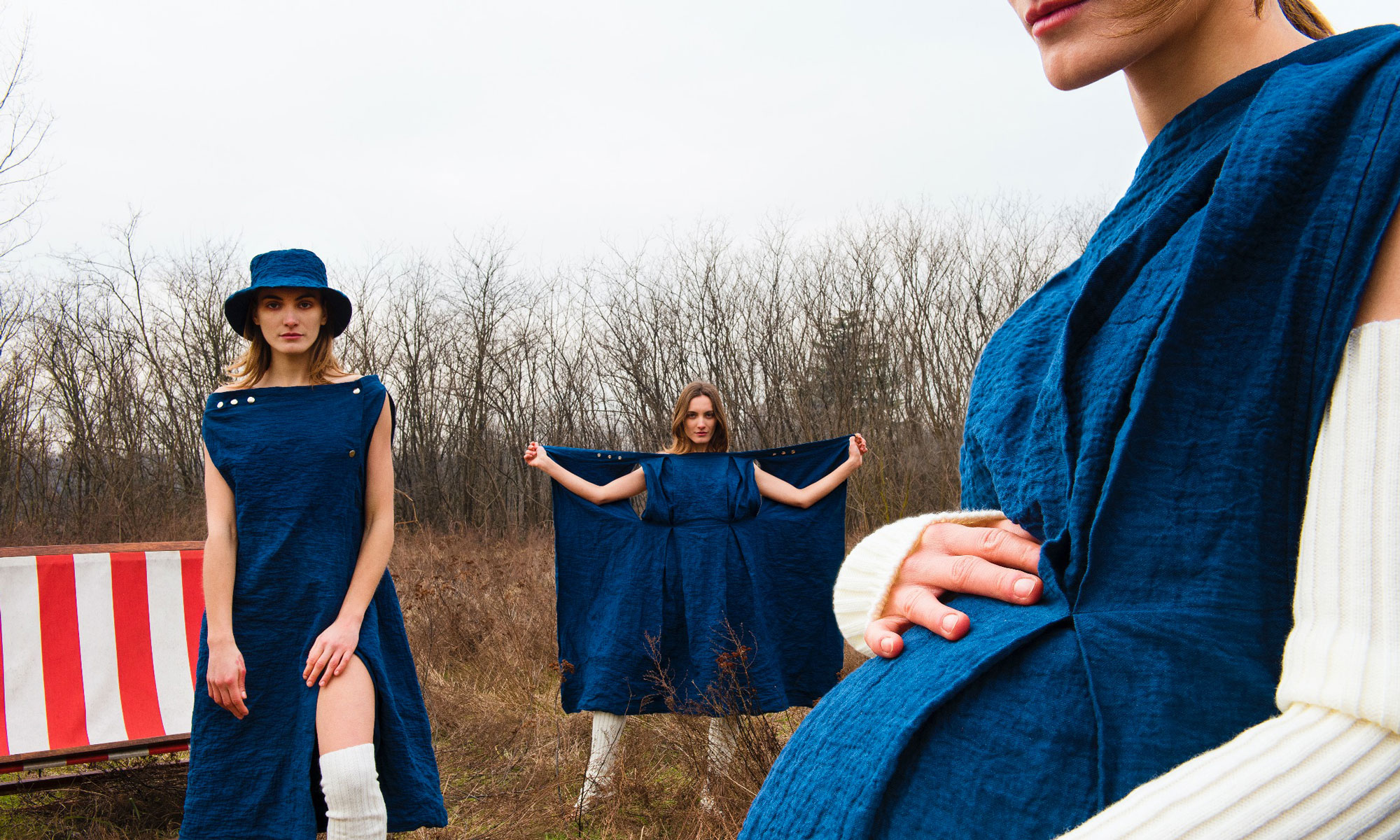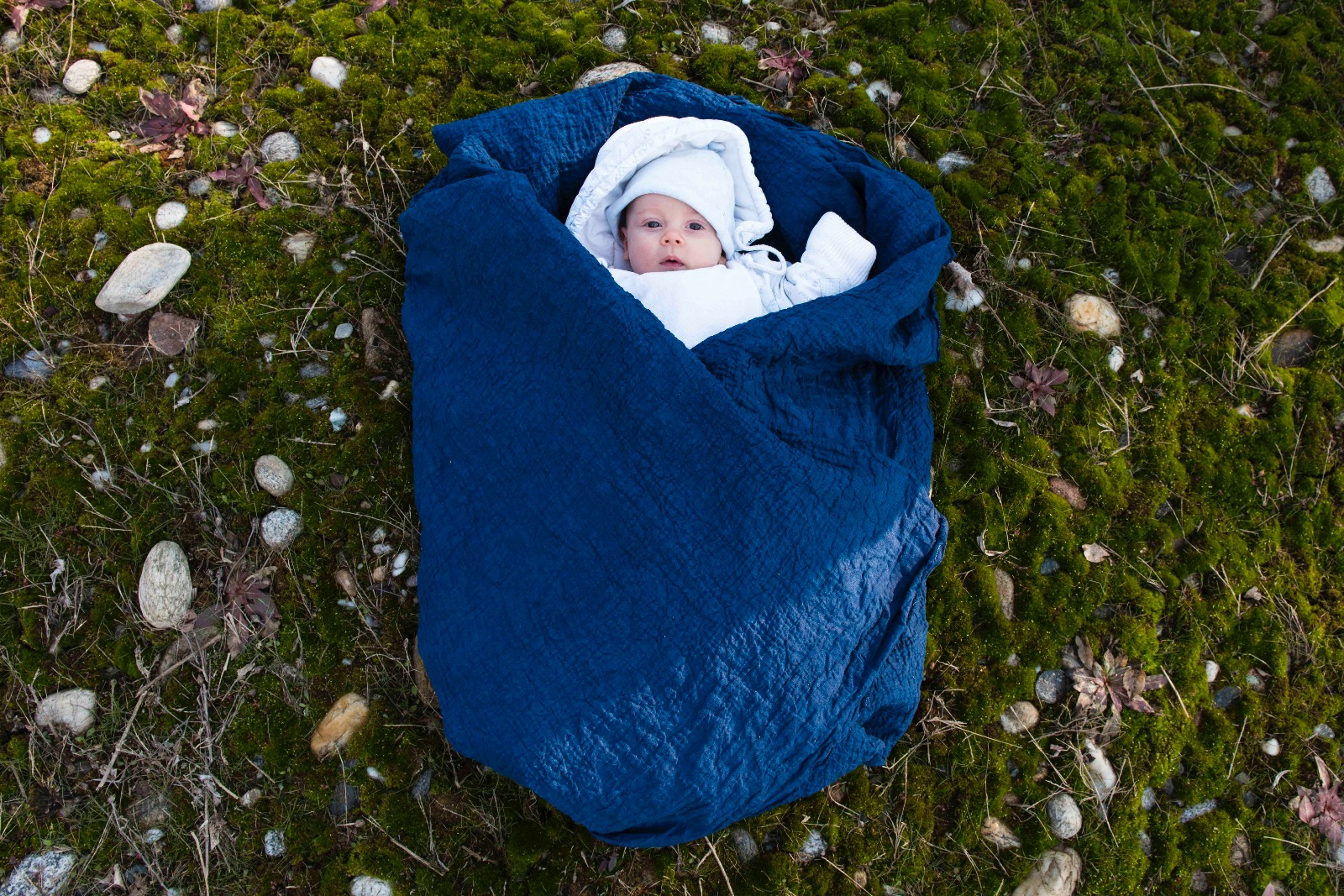In an era of ubiquitous wireless signals from wifi, cell phones, and myriad electronic devices, some studies have raised concerns about potential health impacts from extended exposure to electromagnetic radiation, though the science remains hotly debated.
An independent designer based in Milan, Italy has developed a novel "smart textile" that can shield wearers from electromagnetic fields (EMFs), and electropollution as creator Zoe Romano puts it, using a blend of cotton and metallic fibres. But rather than a clunky protective suit, the material looks and feels like regular cotton fabric.
"If you don't tell people, they don't realize it," says the designer, a philosopher turned textile innovator. "It looks like jeans or any other cotton garment."
 Beyond its shielding capabilities, a key innovation is that the textile can be fully regenerated through a mechanical recycling process without using water or chemicals.
Beyond its shielding capabilities, a key innovation is that the textile can be fully regenerated through a mechanical recycling process without using water or chemicals.
After wearing a garment, customers can return it to the designer who shreds the fabric into a fibre, produces new yarn, and reweaves it into a new textile product in a closed loop.
"This is the first smart textile that has this regenerative, sustainable feature," the designer claims. "I don't know of any other shielding textile that can be recycled in this mechanical, circular way."
While designed as a fashionable lifestyle product, the EMF-shielding fabric could have applications to increase the performance of uniforms in professions where exposure risks are higher but a stylish look is requested: urban facilities densely equipped with devices and antennas like research centres, universities, and health-care clinics etc.
However, the designer is focused on promoting it as an eco-conscious choice for wellness-minded consumers with an evolving body, especially groups like pregnant women who may be more vulnerable to potential radiation effects.
“People benefiting from the use of Clotho textile would be women expecting a child, people with electromagnetic hypersensitivity, men concerned with fertility issues and others looking for a more natural lifestyle with less radiation exposure. But it could work for industrial uniforms and other professional uses too.”
To bring the technology to market, the designer developed a pregnancy-friendly capsule collection suitable for any sex or gender, and she is seeking collaborations with clothing brands interested in using smart textiles for a sustainably produced line or collection. Several companies, including some making maternity and children's clothing, have already expressed interest.
The textile represents an innovative and intriguing combination of smart materials, sustainable production, and circular design principles produced through an open-source process.
“We developed a specific "recipe" for the blended textile and a customised way to manufacture it. The lack of patents is part of the open innovation approach – we want to create collaborations with other companies to bring faster change to the industry”
--
Zoe Romano
A Craftivist Shielding Fashion from Electromagnetic Radiation
 Zoe Romano is a craftivist, digital and fabrication strategist, lecturer focused on social innovation, women in tech, and open design. She graduated in Philosophy at the University of Milan, worked for several years in strategic communication, and developed her social skills as a media hacktivist on precarity, material and immaterial labour in the creative industries. She worked for Arduino as a communication strategist from 2013 to 2017 and co-founded one of the first maker spaces in Milan, WeMake focused on design and fashion. She’s now an R&D consultant, teaches courses in various organisations and collaborates on EU-funded digital social innovation projects. She takes part in research/activism initiatives and develops projects around e-textiles and digital fabrication in different contexts.
Zoe Romano is a craftivist, digital and fabrication strategist, lecturer focused on social innovation, women in tech, and open design. She graduated in Philosophy at the University of Milan, worked for several years in strategic communication, and developed her social skills as a media hacktivist on precarity, material and immaterial labour in the creative industries. She worked for Arduino as a communication strategist from 2013 to 2017 and co-founded one of the first maker spaces in Milan, WeMake focused on design and fashion. She’s now an R&D consultant, teaches courses in various organisations and collaborates on EU-funded digital social innovation projects. She takes part in research/activism initiatives and develops projects around e-textiles and digital fabrication in different contexts.
Learn more about Clotho, here









 Beyond its shielding capabilities, a key innovation is that the textile can be fully regenerated through a mechanical recycling process without using water or chemicals.
Beyond its shielding capabilities, a key innovation is that the textile can be fully regenerated through a mechanical recycling process without using water or chemicals.  Zoe Romano is a craftivist, digital and fabrication strategist, lecturer focused on social innovation, women in tech, and open design. She graduated in Philosophy at the University of Milan, worked for several years in strategic communication, and developed her social skills as a media hacktivist on precarity, material and immaterial labour in the creative industries. She worked for Arduino as a communication strategist from 2013 to 2017 and co-founded one of the first maker spaces in Milan, WeMake focused on design and fashion. She’s now an R&D consultant, teaches courses in various organisations and collaborates on EU-funded digital social innovation projects. She takes part in research/activism initiatives and develops projects around e-textiles and digital fabrication in different contexts.
Zoe Romano is a craftivist, digital and fabrication strategist, lecturer focused on social innovation, women in tech, and open design. She graduated in Philosophy at the University of Milan, worked for several years in strategic communication, and developed her social skills as a media hacktivist on precarity, material and immaterial labour in the creative industries. She worked for Arduino as a communication strategist from 2013 to 2017 and co-founded one of the first maker spaces in Milan, WeMake focused on design and fashion. She’s now an R&D consultant, teaches courses in various organisations and collaborates on EU-funded digital social innovation projects. She takes part in research/activism initiatives and develops projects around e-textiles and digital fabrication in different contexts.